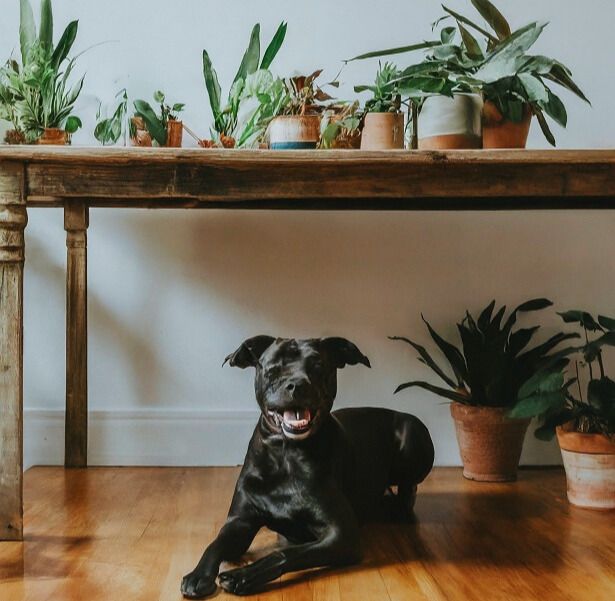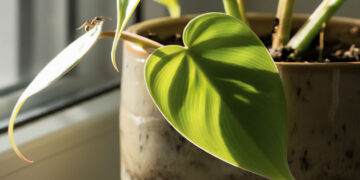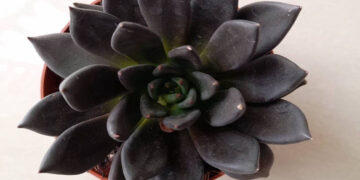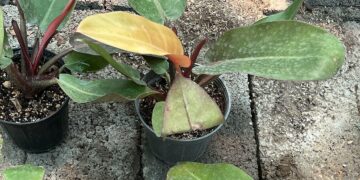
Pet owners should be aware of the characteristics of the ZZ plant, which is popular among indoor gardeners due to its low maintenance requirements and plenty of foliage.
The question that arises is, “Are ZZ Plants Toxic to Dogs?” Yes, It is true that dogs should avoid ZZ plants since they contain crystals of calcium oxalate. Ingestion can cause diarrhea, vomiting, and excessive drooling, in addition to discomfort. Typically, the first symptoms are discomfort in the mouth and stomach. While infrequently lethal, ingestion can cause your pet a great deal of suffering.
Strategies for Plant Safety in Pet-Friendly Homes
The following training advice can assist you and your pet’s companions coexist peacefully with houseplants:
1. Choosing a Non-Toxic Plant
Ensure that your house is a tranquil sanctuary for both your plants and pets. Prioritize the safety of your feathered or furry friends before introducing any new green companions into your home. For valuable guidance on selecting pet-friendly plants, consider visiting the ASPCA website. Bamboo palms, Boston ferns, and spider plants stand out as excellent choices for adding lush foliage to your space without any hassle.
2. Putting Things in the Right Places for Safety
Consider your pet! Keep enticing plants off the floor and out of reach. Alternatively, think of hanging planters, high shelves, or even creating a pet-free area specifically for your botanical treasures. This strategy is in line with the recommendations of pet safety professionals and garden aficionados, who advise keeping plants out of the reach of inquisitive paws.

3. Using Physical Barriers
Even the most well-mannered pets occasionally get playful. Decorative cages or mini greenhouses can be a stylish solution, creating a win-win situation. They guarantee that your dogs and your plants can flourish in your house by safeguarding your plants and offering a safe refuge for your foliage.

4. Teach your Pets
Use straightforward instructions like “leave it” to teach them to avoid plants. Encouragement and treats help with their learning!
5. Keep an eye on your plants
Regularly check them for diseases or insects. Check that your curious pet avoids ingesting any fallen leaves by picking them away.
6. Teach Everyone in the Household
Ensure that all members of your household are aware of which plants are harmful to pets and how to keep them safe.
7. Special plant room (if you can)
If you have space, create a room with plants that your pet can’t get into. This keeps both your plants and pets safe.
8. Sprays to keep pets away
Pet-safe scents, such as citrus or diluted vinegar, should be sprayed around the base of the plant to deter animals.
9. Be prepared in case of emergency
Equip yourself with the phone number of your veterinarian and the nearest animal poison control center.
You might also like: Are ZZ Plants Toxic to Cats? Find Out Before You Bring One Home
Signs of Plant Poisoning in Dogs
It’s imperative to recognize the symptoms of plant poisoning in dogs in order to react quickly and appropriately. The life of your pet can be saved by doing this. Due to their innate curiosity, dogs can chew on plants, including poisonous ones like the ZZ plant, out of boredom or curiosity.
Common Indices of Toxicity
Dogs who consume dangerous plants may have a range of symptoms. The following are a few of the most typical ones to be aware of:
Vomiting: This is a common symptom of plant poisoning and may be an indication of the digestive system.
Diarrhea: Like vomiting, indicates that your dog’s body is attempting to eliminate the poisons.
Keep an eye out for these more serious signs that call for prompt veterinary care:
Abdominal pain: Severe stomach pain could be a sign of serious toxin damage or irritation.
Tremors or shaking: Your dog’s nervous system is being impacted by toxins if they are exhibiting tremors.
Seizures: Needing emergency veterinary attention, seizures are a highly serious symptom.
Physical Observations
It’s crucial to keep an eye out for any physical symptoms, such as redness or swelling around the lips or tongue, which may indicate that your dog has become irritated by toxic plants. If they suddenly retreat, observe for breathing problems and excessive drooling, especially if the plant has caused respiratory distress.
Ongoing Observation
For the next 24 to 48 hours, watch your dog closely for any delayed signs. Certain toxins may take time to show their effects.
Understanding Dog-Specific Reactions
It’s important to keep in mind that various dogs may react to toxins in different ways, so learning about your dog’s medical history will help you determine how serious their reaction may be.
First-Aid Preparedness
Make sure your pet’s first aid kit is readily available and has items such as activated charcoal (if prescribed by your veterinarian), a syringe for administering oral medicines,
What to do if you suspect your dog ate a toxic plant
Remove any small pieces of plant from your dog’s mouth and gently wash your dog’s mouth with water. Make an immediate call to animal poison control or your veterinarian. If you know, let them know what kind of plant your dog ate when they ate it, and how much. Do not induce vomiting unless your veterinarian tells you to.

























